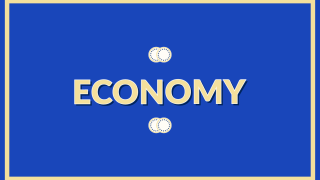Two things are vital for a surgical procedure to be successful, my father used to say: the surgeon knowing what to do and how to do it. As the dedicated and meticulous surgeon that my father was, he never would “go into”, as he used to say, a patient if both conditions were not present, nor would he permit any of his team in the operating room to act without knowledge and skill. The same is true for the development of the country. Governing and lifting the country out of the rut it’s in also requires two things: political capacity to get things done and utter clarity in what needs to be done. These two conditions have not been present since 1994.
It’s important to call this story briefly to mind because it explains much of the present dilemma. With the 1968 Student Movement, the so-called “stabilizing development” economic strategy was abandoned and a decade of growth commenced based on deficit spending, financed with the foreign debt. That era ended obstreperously when the combination of inflation, indebtedness and recession practically bankrupted the country. The worst thing was that it left in its wake a trail of consequences and distrust that have yet to be erased from the minds of citizens and investors alike. In the eighties there began a process of economic reforms that, little by little –often reluctantly and not always integrally-, started parceling out viability to the country.
Regrettably, this impetus was lost once again with the Zapatista uprising, the governmental turmoil, the political assassinations and the 1994 financial crisis. At the beginning of that year the bearings were lost of the development adopted in the previous decade and, although stability was maintained (not a lesser feat) the country was not to procure a total transformation.
During the present decades, the country has survived and prospered thanks to two circumstances: on the one hand the financial stability that has enabled very low interest rates, growth of consumer credit and the gradual consolidation of a middle class that has become the cardinal factor of both the economic as well as the political stability the country possesses. On the other hand, the backbone of all this has been the North American Free Trade Agreement (NAFTA) that has converted exports into the motor of the Mexican economy and that has slashed the prices of all sorts of consumer goods, allowing the acquisition of consumer staples (above all food, clothes and shoes) with a declining percentage of available family income, all culminating in better quality of life levels. Absent still is for the whole economy to join this transformation process in order to magnify the benefit for the entire population.
To achieve this transformation two simultaneous ingredients are required: a development strategy and the capacity to put it into practice. Both components are necessary and each entails its own characteristics. The strategy must be compatible with the environment in which it is to be implemented (NAFTA, financial stability, exports, the “old” manufacturing sector that languishes away) while it maximizes the potential of increasing the productivity of the economy in general. This combination of leveraging what’s successful and driving the growth of productivity forward could be the determining factor of the future of the country’s economy. For its part, the capacity to manage this political complexity is a sine qua non for implementing the strategy that the government decides to adopt.
Over the past two decades many ideas have been conceived for accelerating the growth of the economy, but a growth strategy has never been consolidated. Whatever the case, in all of this time the great absentee component in the mix has been the political skill to get things done; that is, even if there had been a viable strategy, the political incapacity would have made it irrelevant, as it actually did. Under the necessary conditions and in the presence of experts and well qualified advisors, the strategy could have been constructed with relative celerity. However, if the political side is lacking, the strategy may be extraordinary but it cannot be implemented. In other words, the strategy is necessary but it is not enough of a factor: it requires the capacity of political instrumentation.
The great opportunity that the country has before it is precisely that, as it has demonstrated in the last few months, the government today has more than sufficient political capacity, something not seen since January of 1994. What’s missing is an economic development strategy that transcends the commonplace scenarios, the list of occasionally disjointed reforms and the revamped mechanisms of political control. The government certainly knows how to do this. What’s needed now is for the government to clearly define what must be done. And to do it.
Deficit and Opportunity






Comments